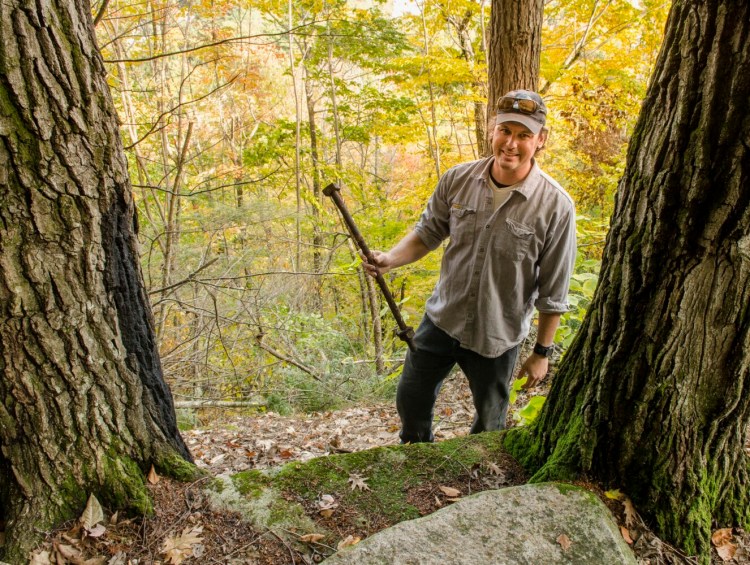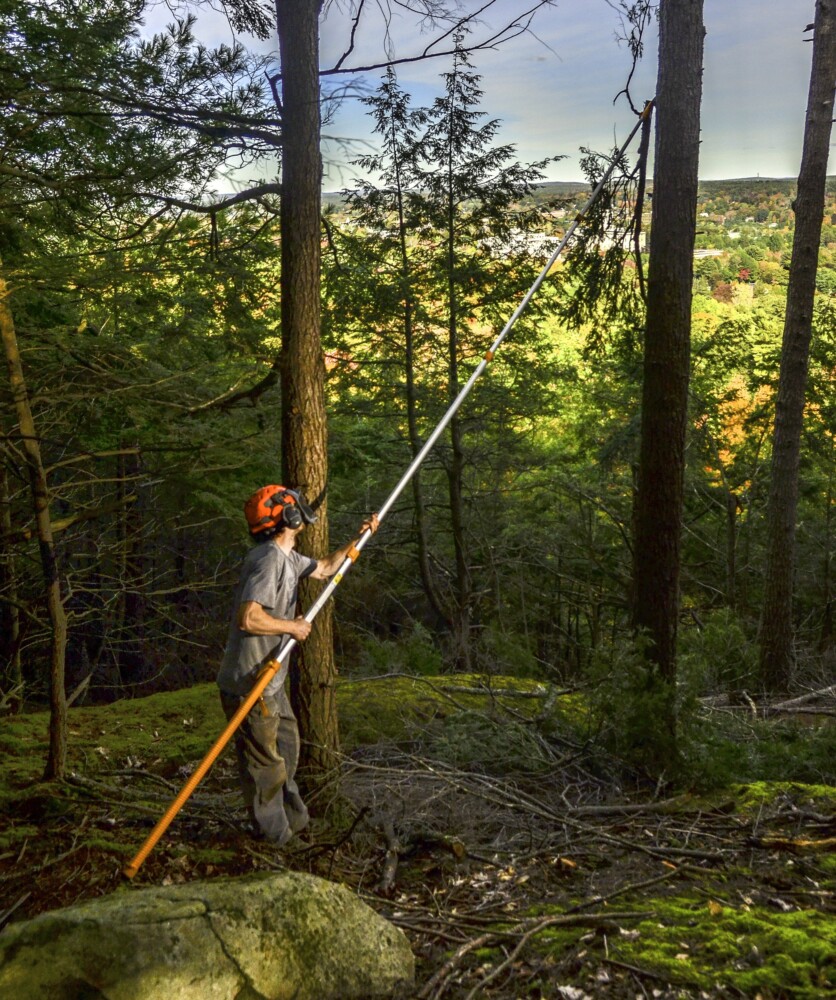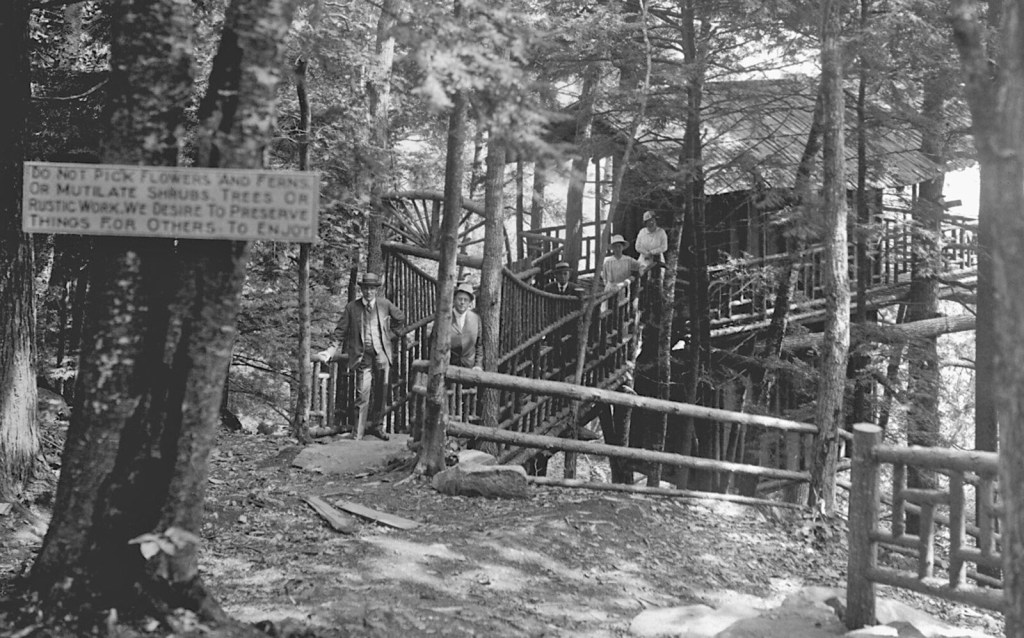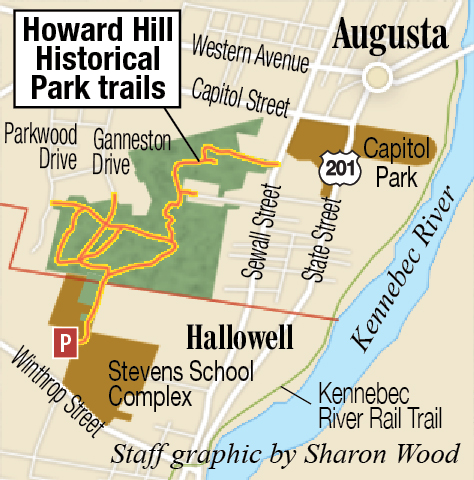AUGUSTA — When it comes to connecting people to wildlife, Howard Hill Historical Park has it all, the state’s commissioner of Inland Fisheries and Wildlife said Thursday at the 164-acre site’s dedication.
With fall’s array of multicolored leaves on display for miles behind her, Commissioner Judy Camuso said Howard Hill’s prominence and easy access for people, combined with its spectacular and diverse habitat for wildlife, make it the perfect spot for people to make and share connections to nature, and instill those connections in future generations.
“An oasis for both people and wildlife, right here in the heart of our state capital,” Camuso said from an overlook with expansive views of Augusta and beyond, to a few dozen attendees at the park’s dedication Thursday. “From a wildlife perspective, Howard Hill has it all. With softwoods and hardwoods, it provides a home or stopping off point for a whole host of wildlife species.
“The key for all of Maine’s diverse wildlife will be protecting a wide range of habitats and in providing connectivity between those habitats. This dedication is an example of ensuring that not only does Maine’s wildlife have a home, but the people of Maine and those that visit have a place to enjoy Maine’s wildlife. People will protect what they care about.”
The city of Augusta was given the wooded hilltop site, which provides a scenic backdrop to the State House, by Kennebec Land Trust in 2017, after the trust, using a mix of privately raised and public, but no city of Augusta, funds to purchase the land for about $925,000 from local lawyer Sumner Lipman.
A conservation easement the trust attached to the property before turning it over to the city bans development on the site, other than recreational trials and related amenities.
Howard Lake, of Readfield, a member of the land trust’s board of directors, thanked the numerous volunteers who have cut trails on the property and donors who contributed funds for its purchase. He reminded them that at times it looked like it would not happen.
The land trust initially was expected to use $337,500 in Land for Maine’s Future money to help pay for the purchase. However, Land for Maine’s Future funding for the $1.2 million project was slashed from the previously promised $337,500 to $163,500 in 2016.
Five of six members of the Land for Maine’s Future board, all of whom were either appointed by former Gov. Paul LePage or worked for him, voted to reduce the state’s contribution to the project, expressing concerns about the accuracy of the roughly $1 million appraisal of the property done for the land trust. The property was assessed by the city, for tax purposes, at just $171,000.
Land trust officials have defended what they pay for such properties, stating they have the properties professionally appraised, based upon their “highest and best use,” or what their value would be if they were to be developed.
The trust took out a loan to close the funding gap so the project could proceed.
“We had our challenges, there were times it looked pretty bleak,” Lake said. “At times, we thought maybe we wouldn’t be able to raise the money, and we had already spent a lot of money on it. But we persevered, and here we are.”
The $337,500 loan from Kennebec Savings Bank helped the land trust move ahead with the project before the trust had raised the entire $1.2 million needed for the project.
Andrew Silsby, president of KSB, said his father, David Silsby, worked for the state Legislature for 27 years and, because of his belief that a state known for its forests and land should have a forested backdrop to its state capital, fought for years to get the state to preserve the same land, but could not convince state leaders to fund it.
Andrew Silsby said he had lunch Thursday with his dad, who showed him old photographs of the site and gave him a history lesson.
The property is spread between a point just south of Capitol Street to the Hallowell line at the former Stevens School complex. It is accessible from spots off Sewall Street, at the end of Ganneston Drive in Augusta and from a trailhead at Stevens Commons in Hallowell.
Mayor David Rollins, who lives near the Ganneston Drive entrance to the park, said the park is one more example of Augusta’s many attractions that make Augusta the best small city in New England. He also said its another example of Augusta preserving the environment and its growing network of recreational trails, a network he hopes will continue to grow.
“Let’s evolve this a little more every year, and add more trails, Ansley is going to live out here,” Rollins joked, referencing Ansley Sawyer, a member of the Augusta Conservation Commission who has served as a steward of Howard Hill and put extensive time into cutting trails in the park.
The property once was owned by William Howard Gannett, who in the 1890s bought some 450 acres including Howard Hill — where he created Ganneston Park.
The park included gardens, ponds, carriage paths and trails he opened to the public so they could enjoy the natural setting as his family did in their log cabin lodge on the site, Camp Comfort, so named because Gannett was publisher of Comfort Magazine, the first American periodical to reach a circulation of more than 1 million.
The Gannetts had a large, cliffside treehouse on the property, believed to be on or near the site where a scenic overlook with expansive views is now located.
Copy the Story LinkSend questions/comments to the editors.







Success. Please wait for the page to reload. If the page does not reload within 5 seconds, please refresh the page.
Enter your email and password to access comments.
Hi, to comment on stories you must . This profile is in addition to your subscription and website login.
Already have a commenting profile? .
Invalid username/password.
Please check your email to confirm and complete your registration.
Only subscribers are eligible to post comments. Please subscribe or login first for digital access. Here’s why.
Use the form below to reset your password. When you've submitted your account email, we will send an email with a reset code.